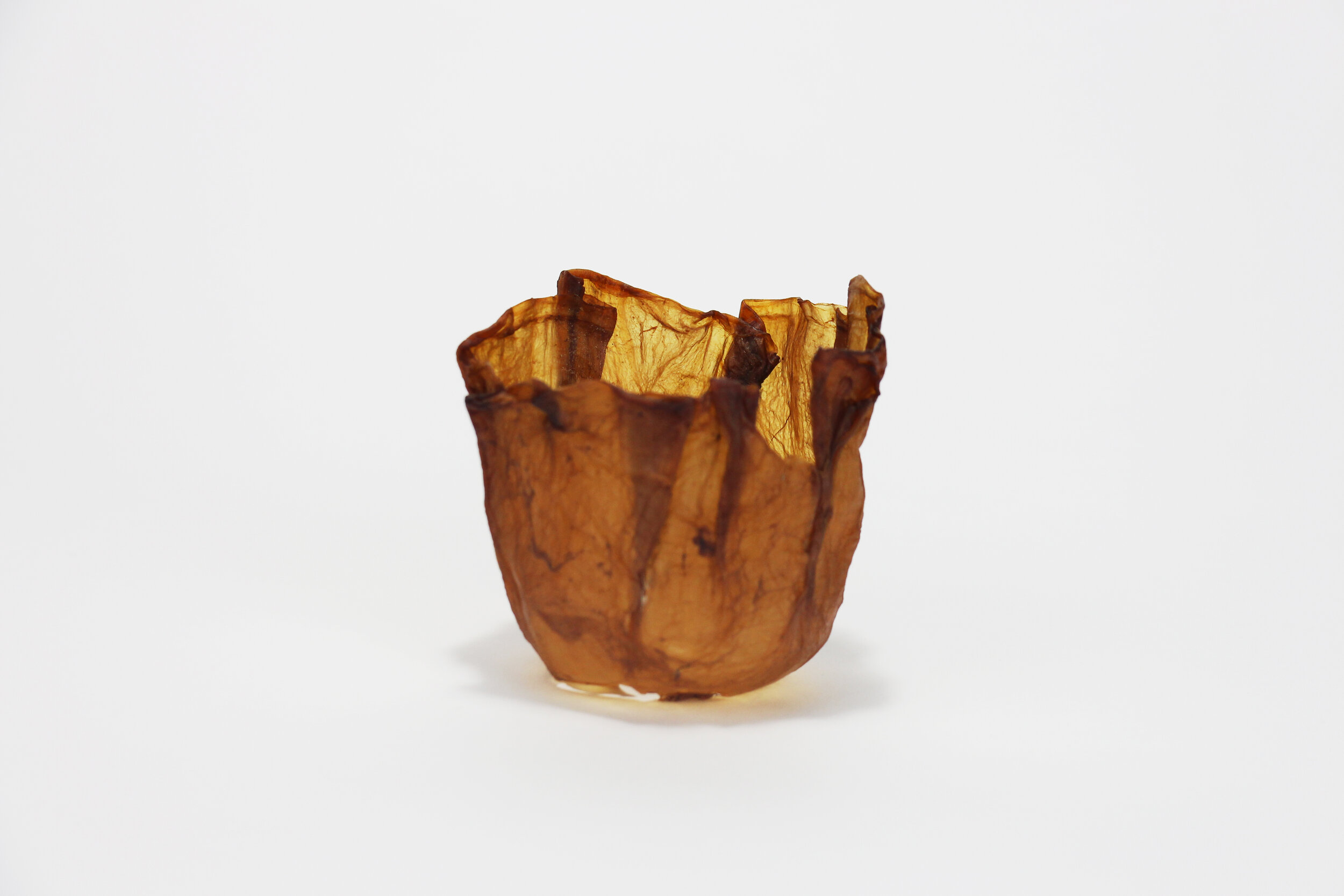MBRn
NATURE’S SUSTAINABLE PACKAGING
2018
Pratt Institute, New York
Responsibilities: Environmental Material Research, Concept Development
Collaborators: Biodesigner Jessica Gregory
Features: The Alimentarium Musuem, Switzerland, 2020 + London Design Festival Exhibition, 2018
Context
Society at large relies too heavily on plastic for our products, in particular packaging, which produces an average of 78 million metric tones of plastic waste worldwide.
Challenge
To test and share alternative home packing production methods made of 100% naturally derived biodegradeable materials.
Opportunity
MBRn is a solution which uses cellulose based plastic grown from glucose derived from food waste. Cellulose is a structural element in many living organisms, such as plants, but is also made by bacteria and has properties such as high purity, strength and moldability, making it suitable for a product like packaging. The products produced show the range of bacterial cellulose application through the drying process and form manipulation.
The Science
The regenerative process of growing bacterial cellulose starts from one mother culture, also known as a symbiotic culture of bacteria and yeast. This culture produces cellulose from fibres, when it is combined with tea, vinegar and glucose. We made the point of using glucose from food waste to eradicate the need for processed sugar and utilise a natural waste material. The cellulose is formed as a layer on top of the solution. This layer takes two weeks to grow before it is harvested, moulded and left to air dry for four days. We chose to use glucose from apples and beetroot because of their high sugar content. These samples have brittle properties, but their ductility can be manipulated during growth. Aside from reducing reliance on plastic production, this process involves no harmful toxins, generates no waste, and the process itself is cumulative making mainstream cellulose farming a future possibility.
Cristina Carbajo © 2024


